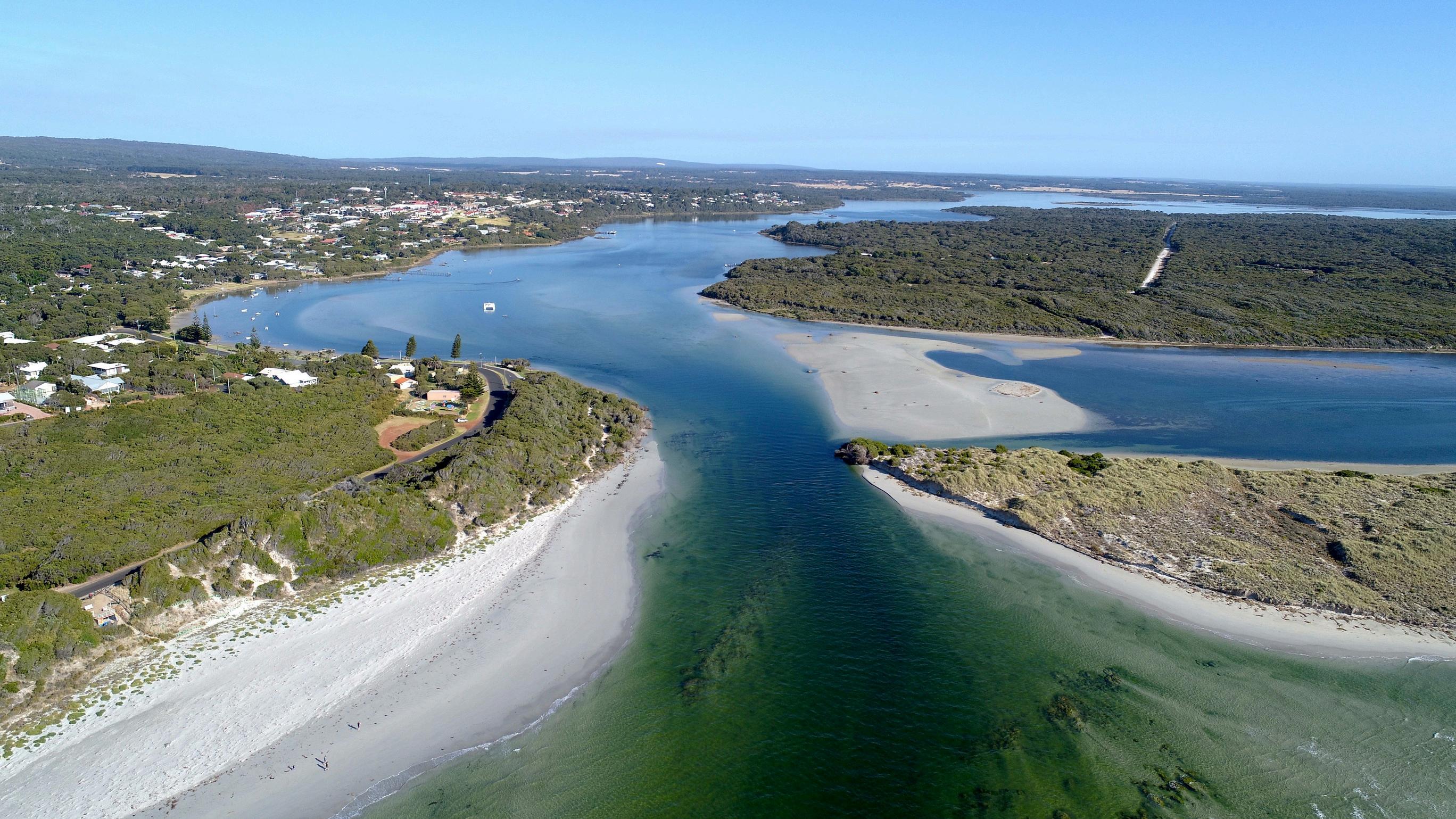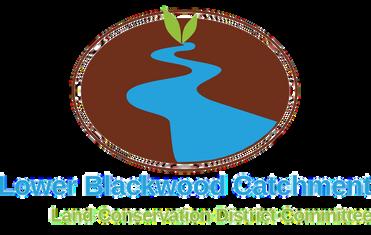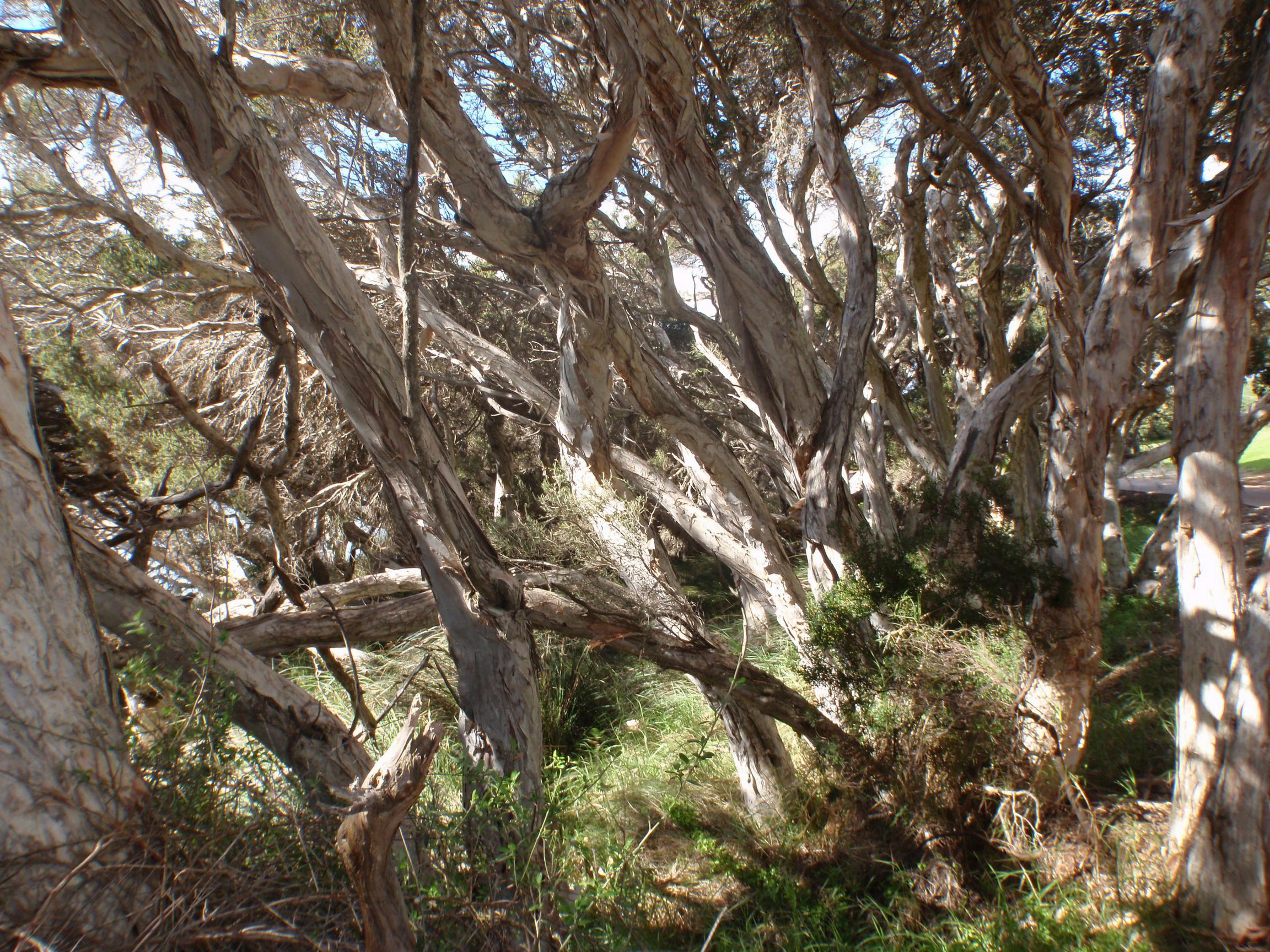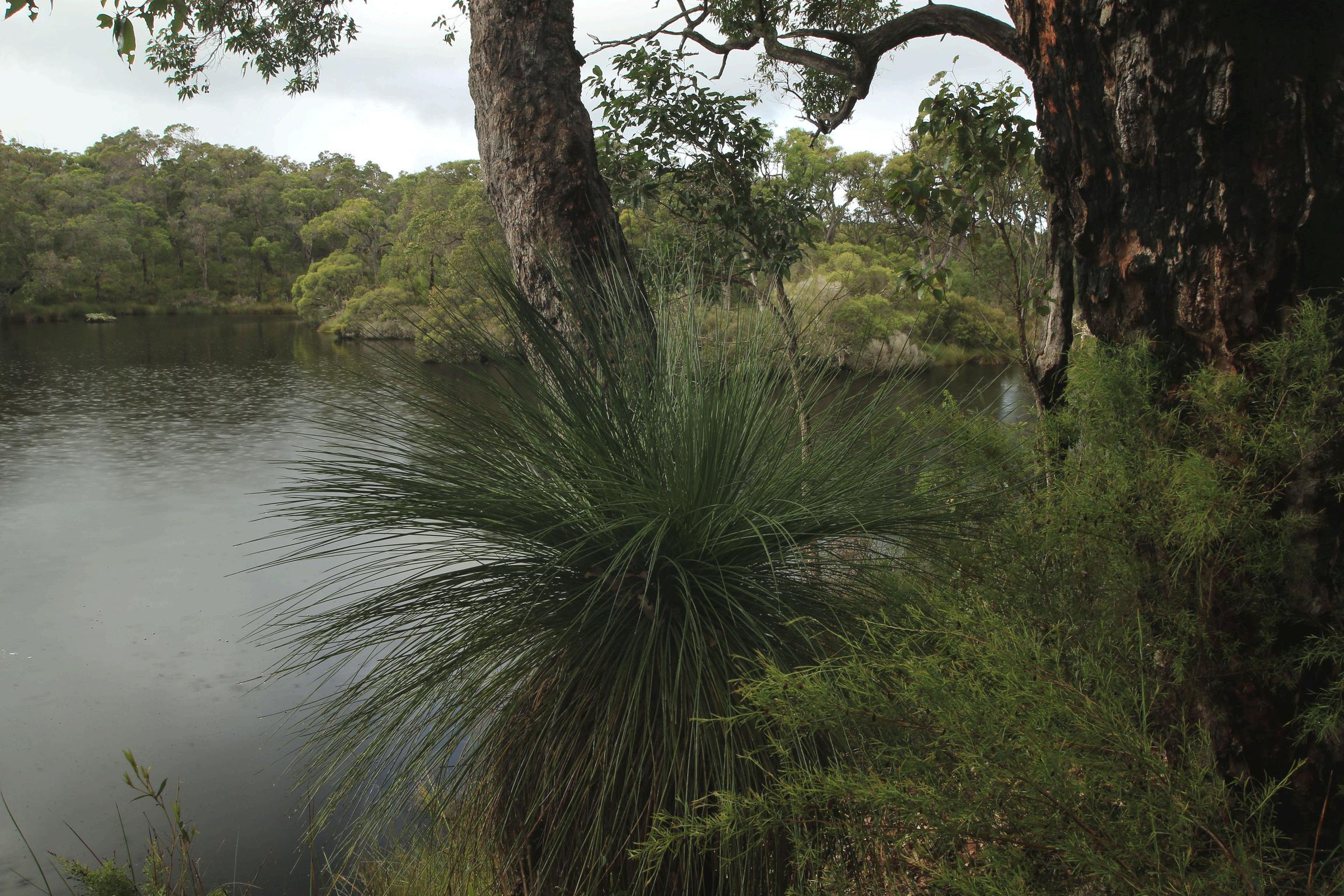







TheBlackwoodCatchmentisthelargestcatchmentinthesouthwestofWestern Australia,coveringanareaof2.3millionhectares(Figure1).TheCatchmentspans diverselandscapesfromthelowrainfallMalleeandAvonWheatbeltintheeast,to theJarrahForestsandwettercoastalWarrenregionsofthesouthwest.
WithinthebroaderBlackwoodBasin,thelowerBlackwoodsub-catchmenthasthe highestproportionofnativevegetationunderconservation,withnearly70%ofthe areacomprisingStateForestorotherconservationestate.Inthemiddle catchment,~40%remainscoveredinnativevegetation,with~26%protectedwithin conservationreservesorStateForest Outsideoftheseformalconservationareas, remainingvegetationislargelyfragmentedandconfinedtoremnantpatches, riparianzones,androadreserves Incontrast,theuppercatchmenthas experiencedextensivelandclearingforagriculturaldevelopment,leaving16%of nativevegetationintact,with3%ofthatwithindesignatedconservationareasor StateForest.Thislarge-scaleclearinghascontributedsignificantlytodryland salinity,particularlyintheupperandmiddlecatchments.


TheBlackwoodCatchmentwasdividedinto ninezonesintheearly1990saccordingto vegetationtypes,activeenvironmental groupsandlocalgovernmentareas.This helpedidentifylocalissuestomakesureon groundworksareappropriateandrelevant toeachzone.Anumberofon-ground actions,researchandeducationhave occurredinthezones,howeverthishas beenunevenlyspreadacrossthe Catchment,withmoreworkinthelower catchment(BlackwoodBasinGroup1998).

Themainlandusetypeinthe Catchmentisagriculture,including cropping,livestockgrazing(sheepand beef),dairying,horticulture,viticulture, andforestry Agriculturalactivitieshave increasedrunoffanddamagedriparian vegetation(Brearly2013).Othermajor industriesincludetourismandmining, whichareincreasingintheCatchment.

Thereare51townsand19local governmentareaswithintheCatchment andrapidurbanisation,especiallyinthe west,isagrowinglandusetypeinthe Catchment.Populationhasincreased74% intheShiresofAugustaMargaretRiver,31% inNannupand33%inBridgetownGreenbushes,yethasdecreased11%in Kojonup,3%inDumbleyungand2%in Katanningoverthelast20years(Bureau ofStatistics2001-2021) Afulllistof stakeholdersisgiveninAppendixA.


TherearenineLandcaregroupsintheBlackwoodCatchment(Table1;Figure2) Todate,therehasbeennoIntegratedCatchmentManagementPlan(ICMP)for theBlackwoodregiondespiteinterestincollaborativelandcareforover30years TheStateNRMandSouthWestNRMprovidedfundingforactiveLandcaregroupsto gettogethertodiscussscopingforaBlackwoodCatchmentICMP.
Group
LowerBlackwoodLCDC
ShireofNannup
BlackwoodEnvironmentSociety
BlackwoodBasinGroup
ShireofKojonup
Wagin-WoodanillingLandcareZone Yes No
KatanningLCDC Yes Yes
DumbleyungLCDC Yes No
ShireofKent

Figure2 BlackwoodCatchmentLandcaregroupsandactiveShires
Integratedcatchmentmanagementunderpinssustainablemanagementoflandand waterresourcesandensuresstakeholderscanworkcollaborativelytoachievecommon goals.Thisisparticularlyrelevantinthecontextofchangingclimateandreducingrainfall, wherecooperationacrossgroupsandtheCatchmentisneededtoimproveresilience andadaptability AnintegratedcatchmentmanagementapproachfortheBlackwood Catchmentwouldbeeffectiveindeliveringmorecohesiveandcollaborativelandcare.
TherearestrongLandcaregroupswithintheCatchmentdeliveringanumberofresearch, education,demonstrationandon-groundactivitiesinpartnershipwithcommunityand local,state,andfederalgovernments However,theseactivitiesareconductedinisolation fromotherLandcaregroupsandlocalgovernments.Amorecollaborativeapproachis neededtotacklethelargescalethreatsandchallengesintheCatchment Anintegrated catchmentmanagementplanwouldcollatepreviousdataandworksintheCatchment tobetterunderstandwhattheCatchmentwas,thecurrentstate,anddesiredfuture directions
FundingwasprovidedbyStateNRMandSouthWestNRMfordevelopascopeforanICMP throughinterviews,aninpersonmeetingandanonlinemeeting.Thekeyfindingsand outcomesarepresentedhere.

Interviewswereconducted bytheLowerBlackwood LCDCin2024to understandkeythreats, challenges,priorityareas andsupportofanICMP
TheBlackwoodBasin Group,WaginWoodanilling LandcareZone, DumbleyungLandcare, KatanningLandcare,Facey Group,andBlackwood EnvironmentSociety providedresponses.
Aninpersonworkshopwas heldoninMarch2025in Bridgetowntofurtherdiscuss developinganICMPforthe BlackwoodCatchment. FundingwasprovidedbySouth WestNRMandStateNRM Fifteenattendeeswereatthe workshop,representingthe BlackwoodEnvironment Society,GondwanaLink, KatanningLandcare,Shireof Kojonup,ShireofNannup,the LowerBlackwoodLCDC,and SouthWestNRM.
Anonlinefollowup workshopwashelpin May2025todiscussthe draftscopeoftheICMP andprioritystepsgoing forward BlackwoodBasin Group,Katanning Landcare,Lower BlackwoodLCDCand SouthWestNRM attended.

TheinpersonworkshopheldinBridgetownwasfacilitatedexternally.Topicscovered includedkeythreats/challenges,opportunitiestoworktogether,SOARanalysis(strengths, opportunities,aspirationsandresults)andpriorityactions,whichwerefurtherrefined throughtheonlinemeeting.Avisionstatementwasdevelopedduringtheworkshopby theLandcaregroupstooutlinethelongtermgoalfortheCatchment,alignstakeholders, providestrategicdirectionandtoinspireandengagethecommunity.





Therewereanumberofkeythreatsandchallengesidentifiedinpre-workshop interviewsandduringtheworkshopascommonacrossallLandcaregroups.These arelargescaleissuesthatrequirecollaborationbetweengroupstomakemeaningful impactintheregion.Understandingthreatsatthecatchmentscaleisimportantto informcollaborativemanagementactionstomitigatetheseissues
Lackoflongtermfunding
changesinfunding,government priorities,andlossofstaff , cohesion,communication andtrustbetweenall Landcaregroups
Grantbasedfundingsystemfor environmentalgroups developedinthe2000smakeit difficulttosecurelongterm funding.
Resultsinproject-based approachestolandcare, withoutlongtermcohesion. Thisalsomakesitdifficult toretainstaff.

AkeyfindingfromtheworkshopwasthecollectiveinterestamongallLandcare groupsinstrengtheningrelationshipsacrosstheCatchmenttoimproveresilience andadaptabilitytothethreatstheCatchmentisfacing.Participantsemphasisedthe importanceofin-personmeetingstosupportmoreeffectivecollaborationand knowledgesharing.Therewasbroadconsensusthatonlinemeetingsaloneare insufficienttofosterthemeaningfulrelationshipsnecessaryforsustained cooperation.Enhancedcollaborationwasidentifiedascriticaltoenablingan integratedcatchmentmanagementapproach,therebyincreasingthecollective capacitytoaddressthecomplexthreatsandchallengeswithintheCatchment.
Establishacollective identityasa Catchmenttofoster cohesionbetween groupsandraise publicawarenessof theCatchment. Buildunderstanding onplanning, resources,and infrastructurefor moresustainable functioningof Landcaregroups Understand landscape-wide issuesineachzone andplancohesively acrossthe Catchmentto maximise effectivenessof programs.
Improvesharingof knowledgeandskills betweenLandcare groups Explorealternative fundingstreams, suchasfrom philanthropic organisations Investigatehow Landcaregroupscan applyfordeductible giftrecipientstatus (DGR)and/or registrationwiththe AustralianCharities& Not-for-Profits Commission. Explorecombined lobbyingforfunding andworkon advocacyasa collectivetosupport fundingapplications
Compileand consolidaterelevant documentspertaining totheCatchmentinto acentral,accessible repositoryor‘library’. Atpresent,noshared databaseexists. Facilitatethe exchangeof informationonboth currentandpast projectsamong Landcaregroups withintheCatchment. Promotethesharing ofoperationalinsights, includingday-to-day practicestoenhance mutuallearning acrossgroups.

resilience
Connectionandcollaboration
Findingandachievingbalanceinthe Catchmentbetweenmultiple stakeholderinterestsandvaluesand healthoftheenvironment
Continuedmeaningfuland rewardingworkintheCatchment
numberofstaffandvolunteers)
Howdowesupporteachother?
Shareinformationandknowledgeto avoidduplication.Createa databaseforinformationexchange. Maintainandstrengthen relationshipsbetweenLandcare groupsthroughinpersonmeetings
Keypriorityactionsweredeterminedattheinpersonworkshopandthefollow-up onlinemeeting Itwasagreedthatincreasedcollaborationandbuildingthe relationshipbetweenLandcaregroupsanddevelopingalibraryofpastreportsis neededbeforeamoreformalICMPshouldbedeveloped.Thesepriorityactions ultimatelyaimtoimprovethecapacityofeachLandcaregroupandthecatchment aswholetomitigatekeythreatsinCatchment.

Strengthen thenetwork ofBlackwood Catchment Landcare groups
Strengthen network through regular meetings

Develop wholeof Catchment identityfor Landcare groups
ThesizeoftheCatchmentandprojectbasedsystemoffundingmakeitdifficultfor Landcaregroupstofindthetimeand fundingtomeetinperson.However, strengtheningthecollaborationand cohesionbetweenLandcaregroupsinthe Catchmentwasidentifiedasimportantby allparticipantsintheworkshop.Enduring relationshipsthatextendbeyondcurrent staffareneededforlongtermpositive collaborationintheCatchment.
Awholeofcatchmentidentityisimportant foreffectiveintegratedcatchment managementtopromotecohesionand collaborationbetweenLandcaregroups andtoraisepublicawareness Awebpage (accessiblebythepublictoo)with informationontheCatchment,values, threats,andactiveLandcaregroupswill helpbuildacollectiveidentityand streamlinefuturecollaborativeworks
Researchfunding opportunitiesfor annualinperson meetingsand quarterlyonline meetings
Developandagree onkeyfocusareas fortheworkshops
Uptodate Landcare group information available
TheactiveLandcaregroupsinthe Catchmenthavechangedsinceprevious reportsandneedupdating Thisincludes mappingwhereeachgroupisactiveand compilingcontactdetailsforeachgroup. Thisinformationshouldbecontinually updatedasstaffandgroupschange.
Potentialfora Blackwood Catchment webpageasthe projectdevelops Quarterlyonlineand annualinperson meetingswill developcollective identity
Mapactive Landcaregroup areas
SouthWestNRMto includeLandcare groupinformation (website,contact details,socials)on theirwebsite

Developa database/ library
Collate existing information
Thereareanumberofdocuments(both hardcopyanddigital)relevanttoeach zoneandthewholeCatchmentthatare currentlykeptateachLandcareoffice It wouldbebeneficialtohaveallthese documentsmadeavailableonlineand accessiblebyallLandcaregroupstobuild onpreviousworksandunderstandthe LandcarehistoryintheCatchment This willalloweasiertransferofinformation betweenandwithinLandcaregroups.
Landcaregroupsto collateexisting digitalcopiesof relevantdocuments Researchfunding opportunitiesfor Landcareofficer timetocatalogue anddigitisepaper documentsand timetoreadthem
Make information easily accessible
Developplan forICMP development
Strengthen Landcare group network

Planfor futureICMP
Collatinganddigitisingexistingreports mustbefollowedbymakingthis informationeasilyaccessibletoLandcare groups Thiscanbeachievedbyeach groupholdingtheirownlibrary,acentral repository(forLandcaregroupsonly)and apublicrepository
ResearchingandwritinganICMPtakes considerabletimeandcollaboration betweenallLandcaregroupsand stakeholdersintheCatchment.Reforming relationshipsbetweenallLandcare groupsisneededbeforeanICMPis developed.
Furtherworkunderstandingthetime commitmentandresourcesneededto achievethisisneededbeforefundingcan beappliedfor.Thisincludes understandingwhowilldrivetheproject, timeframes,budgets,andwherefunding besourcedfrom Theterminologyaround anICMPshouldalsobeanalysedand potentiallyreframedaroundbuilding capacityandresilienceintheCatchment.
Createshared onlinefolderfor Landcareofficers KatanningLCDCto hostmainreports onupcoming websiteforpublic
Developastronger networkofLandcare groupsbefore developinganICMP Betterunderstand pastworkinthe Catchment
Agreeon terminologyaround ICMP
Developabusiness caseforplan development Determinewhowill leadtheplan development Researchfunding opportunities

Fiveactiveenvironmentalgroups:LowerBlackwoodLCDC,BlackwoodEnvironmental Society,BlackwoodBasinGroup,FaceyGroup,KatanningLandcare 19localgovernmentareas,someofwhichhaveactiveNRMofficers:ShireofKatanning, ShireofNarrogin,ShireofAugustaMargaretRiver,CityofBusselton,ShireofBoyupBrook, ShireofWickepin,ShireofKojonup,ShireofWestArthur,ShireofKent,Shireof Bridgetown-Greenbushes,ShireofDonnybrook-Balingup,ShireofWagin,Shireof Dumbleyung,ShireofBroomehill-Tambellup,ShireofWilliams,ShireofWoodanilling, ShireofGnowangerup,ShireofNannup,ShireofKulin
SouthWestNRMandWesternAustralianStateNRM Governmentagencies
Indigenousgroups
Farmersandlandholders
Industryandtheirrepresentatives,includingthehorticultureandnurseryindustries Recreationgroupsandusers
Interestedcommunitymembers
Rainfallhasdeclined23%inAugustaand29%inDumbleyung(datafromBureauof Meteorology2025),whichpresentsasignificantenvironmental,economicandsocial challengefortheBlackwoodCatchment.
Augustaaverage(1897-2025)
Augusta2024

Dumbleyungaverage(1910-2025) Dumbleyung2024



